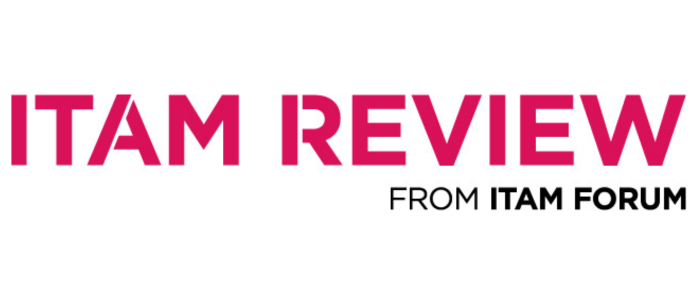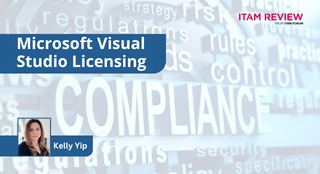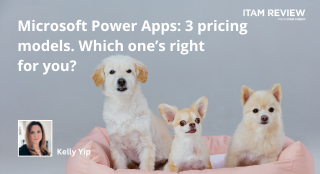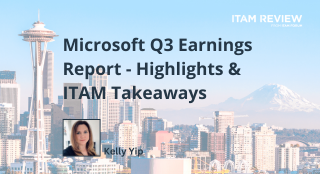Micro Focus licensing guide: Government & non-profit

Image by Jackelberry from Pixabay
Government entities purchase via the “VLA for Government” and the rules are very similar to those for the commercial VLA – these can be found here.
Qualification for the program
Qualifying government entities must meet all of these conditions:
- Perform services or duties of a public character for the benefit of all citizens of a community
- Government-owned or affiliated
- Non-revenue producing and non-profit
- Included in the list of eligible public sector entities as defined by each country’s highest-level governmental authority
- Hold a discernible legislative, administrative, or judicial role
Non-qualifying customers include:
- Government-owned corporations and enterprises
- State-owned enterprises that undertake commercial activities such as:
- Healthcare
- Telecom
- Banking
- Transport
- Utilities
- Qualify as a “Public Charity” not a “Private Foundation” – as defined by Section 509 in the United States Internal Revenue Code
- Produce a copy of their 501(c)(3) determination letter from the IRS. The determination letter must deem the organization as a 501(c)(3) “Qualifying Publicly Supported Charity” rather than a “Non-Qualifying Public Charity”
- Complete the Non-Profit Eligibility Form
- Be designated as a registered non-profit charity organization by their government’s authorizing authority, and hold the highest level of non-profit status
- Produce written verification from their government’s authorizing authority
- Complete the Non-Profit Eligibility Form
Government-to-Citizen licensing
Available for select products, government-to-citizen licensing allows governmental organisations with large numbers of external users to purchase licenses at a discounted price. The definition of “citizen” in this scenario is:
“a citizen or resident to whom a Governmental Entity provides services or goods as part of its normal business operations, except that it does not include current or former employees, agents, contractors or suppliers”
And the definition of a “governmental entity” is:
“a government-owned or affiliated entity performing services or duties of a public character for the benefit of all citizens of a community and whose primary purpose is not to generate a profit. Government-owned or affiliated telecommunications, media, utilities, or mining companies are not Governmental Entities. If there is an issue concerning whether an organization is a Governmental Entity, our opinion will prevail so long as it treats similarly situated entities the same”
Non-profit organisations

Image by Capri23auto from Pixabay
Non-profit organisations purchase via the “VLA for Non-profit” and the rules are very similar to those for the commercial VLA – available here.
Qualification for the program
USA non-profits
USA-based organisations must meet the following criteria:
Non-USA non-profits
Non-profit organisations based outside the USA must meet the following criteria:
The “Non-Profit Eligibility Form” that Micro Focus publicly list is here and, interestingly, is still Novell branded and refers to Novell terms – although the links go to the Micro Focus website.
VLA documents
VLA terms and conditions
VLA Program Guide
VLA Services guide
Can’t find what you’re looking for?
More from ITAM News & Analysis
-
Broadcom vs Siemens AG - A Brewing Storm
The ongoing legal battle between VMware (under Broadcom ownership) and Siemens is yet another example of why ITAM goes far beyond license compliance and SAM. What might, at first glance, appear to be a licensing dispute, ... -
Shifting Left Together: Embedding ITAM into FinOps Culture
During one of the keynotes at the FinOps X conference in San Diego, JR Storment, Executive Director of the FinOps Foundation, interviewed a senior executive from Salesforce. They discussed the idea of combining the roles of ... -
Addressing the SaaS Data Gap in FinOps FOCUS 2.1
I recently reported on the FinOps Foundation’s inclusion of SaaS and Datacenter in its expanded Cloud+ scope. At that time, I highlighted concerns about getting the myriad SaaS companies to supply FOCUS-compliant billing data. A couple ...
Podcast
ITAM training
Similar Posts
-
Microsoft Visual Studio Licensing Guide: Reduce Risks
(This article was reviewed and updated on 3 July 2025) Visual Studio Licensing Visual Studio subscriptions are licensed Per User with each licensed user able to. “install and use the software on any number of device”. ... -
Broadcom vs Siemens AG - A Brewing Storm
The ongoing legal battle between VMware (under Broadcom ownership) and Siemens is yet another example of why ITAM goes far beyond license compliance and SAM. What might, at first glance, appear to be a licensing dispute, ... -
Microsoft Power Apps: Current Pricing Models Comparison
Back in November 2021, Microsoft made Power Apps available under the pay-as-you-go (PAYG) model, alongside the traditional Per User/Per App options. This PAYG model has gained popularity. It ensures simple rightsizing for Power Apps environments. Here, ... -
Microsoft Q3 Soars as AI and Azure Growth Fuels Market Gains
On the 30th April, Microsoft released its Q3 quarterly earnings report, exceeding expectations and igniting investor optimism. Investors had been keeping a watchful eye on Azure’s Cloud performance after Microsoft’s Q2 Cloud results fell short of ...




